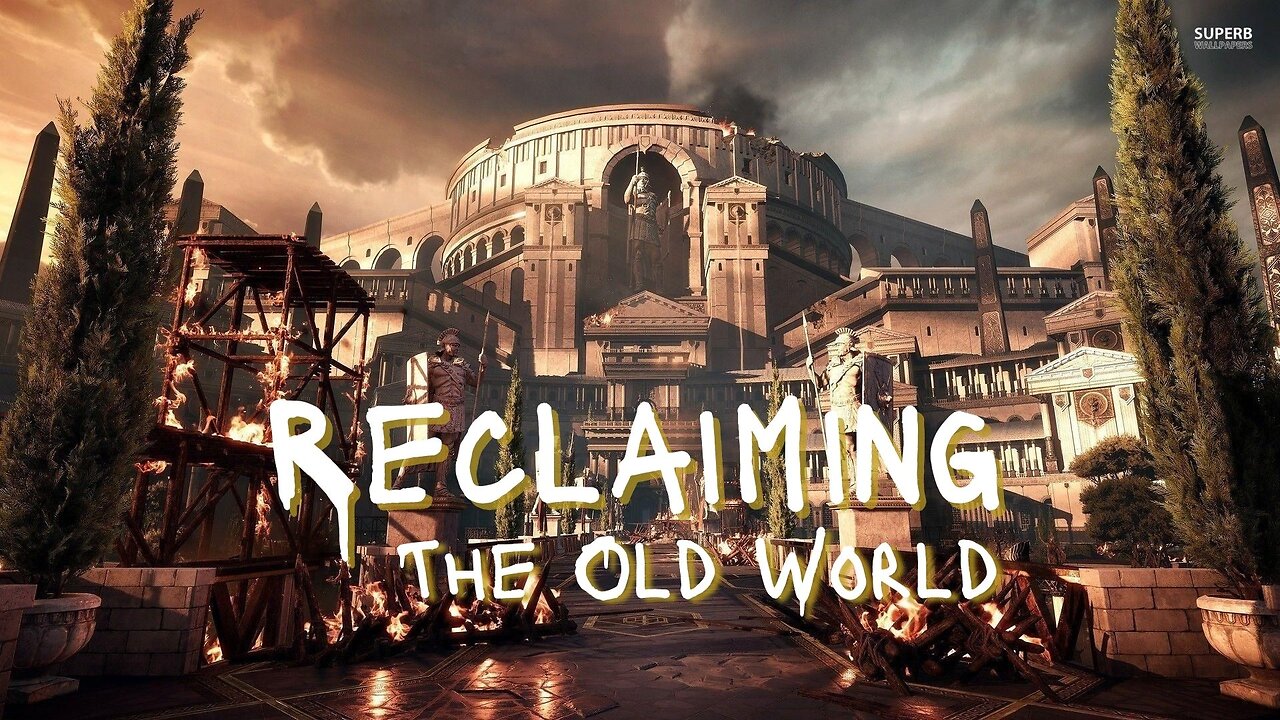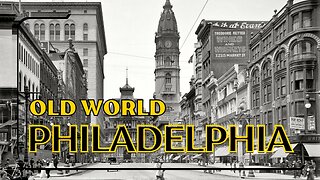Premium Only Content

A Look At Reclaiming The Old World by Introducing The Industrial Revolution
"The mainstream account of our recent history relies on cause and effect to explain our present civilization. One of the examples of "incontrovertible evidence" cited is the process of the Industrial Revolution. This process explains how an agrarian civilization of thousands of years of stagnation or at best limitation took the great leap forward to modernity. This exploration examines the account of the Industrial Revolution and considers how there may be another, more plausible explanation behind this stupendous advancement in humanity."
SOURCE
Lucius Aurelian
The Industrial Revolution, sometimes divided into the First Industrial Revolution and Second Industrial Revolution, was a period of global transition of the human economy towards more widespread, efficient and stable manufacturing processes that succeeded the Agricultural Revolution. Beginning in Great Britain, the Industrial Revolution spread to continental Europe and the United States, from around 1760 to about 1820–1840. This transition included going from hand production methods to machines; new chemical manufacturing and iron production processes; the increasing use of water power and steam power; the development of machine tools; and the rise of the mechanized factory system. Output greatly increased, and the result was an unprecedented rise in population and the rate of population growth. The textile industry was the first to use modern production methods and textiles became the dominant industry in terms of employment, value of output, and capital invested.
An economic recession occurred from the late 1830s to the early 1840s when the adoption of the Industrial Revolution's early innovations, such as mechanized spinning and weaving, slowed as their markets matured; and despite the increasing adoption of locomotives, steamboats and steamships, and hot blast iron smelting. New technologies such as the electrical telegraph, widely introduced in the 1840s and 1850s in the United Kingdom and the United States, were not powerful enough to drive high rates of economic growth.
Rapid economic growth began to reoccur after 1870, springing from a new group of innovations in what has been called the Second Industrial Revolution. These included new steel-making processes, mass production, assembly lines, electrical grid systems, the large-scale manufacture of machine tools, and the use of increasingly advanced machinery in steam-powered factories.
-
 31:01
31:01
The Aquarius Bus
10 months agoExquisite Old World Philadelphia. Founded 1682. Why Did They Move The Capital to DC?
2.04K8 -
 LIVE
LIVE
The Rubin Report
2 hours agoDave Rubin Can’t Believe This Happened While He Was Off the Grid | Jillian Michaels Guest-Hosts
2,349 watching -
 LIVE
LIVE
Rebel News
56 minutes agoFather killed in home invasion, Predator targets toddler, Who's destroying Canada? | Rebel Roundup
352 watching -
 UPCOMING
UPCOMING
TheAlecLaceShow
1 hour agoTrump Health Hoax | Warp Speed Truth | UK Protests | Guest: Sheriff Mack | The Alec Lace Show
39 -
 LIVE
LIVE
The Mel K Show
2 hours agoMORNINGS WITH MEL K - Liberty, Privacy, Sovereignty & Justice: The Battle Ahead 9-2-25
1,020 watching -
 18:52
18:52
Colion Noir
2 days agoCourt Rules You Don't Need AR-15s For Self Defense, Mayor's Message If You Love Kids Ban AR-15s
40.3K151 -
 LIVE
LIVE
The Shannon Joy Show
1 hour agoKicking And Screaming … Trump FINALLY Admits Operation Warp Speed MAY Have Been A Complete Failure
263 watching -
 35:04
35:04
Grant Stinchfield
1 hour agoCOVID VAX SECRETS: BIG PHARMA PANICS AS TRUMP DEMANDS THE TRUTH!
7951 -
 LIVE
LIVE
LFA TV
7 hours agoLFA TV ALL DAY STREAM - TUESDAY 9/2/25
4,549 watching -
 1:01:26
1:01:26
VINCE
4 hours agoShockwaves in the Swamp Over Trump's Latest Move | Episode 116 - 09/02/25
187K152